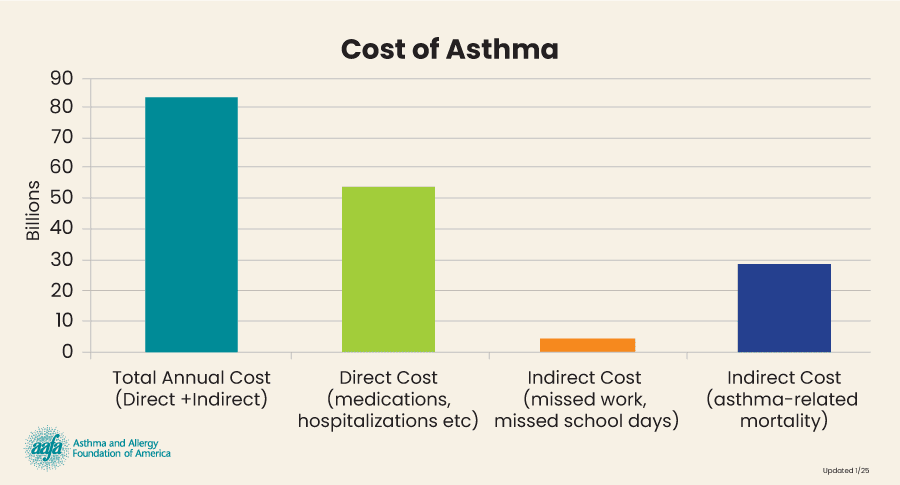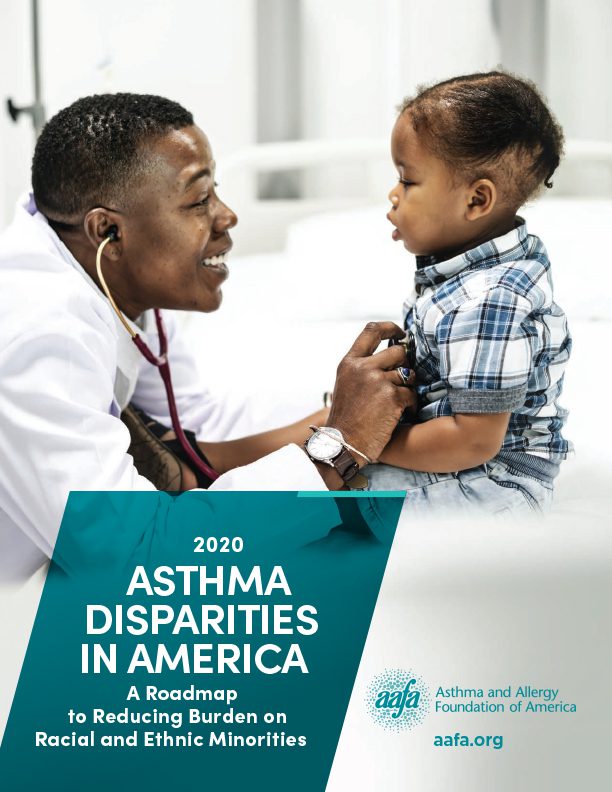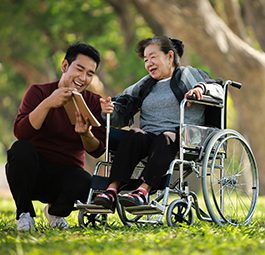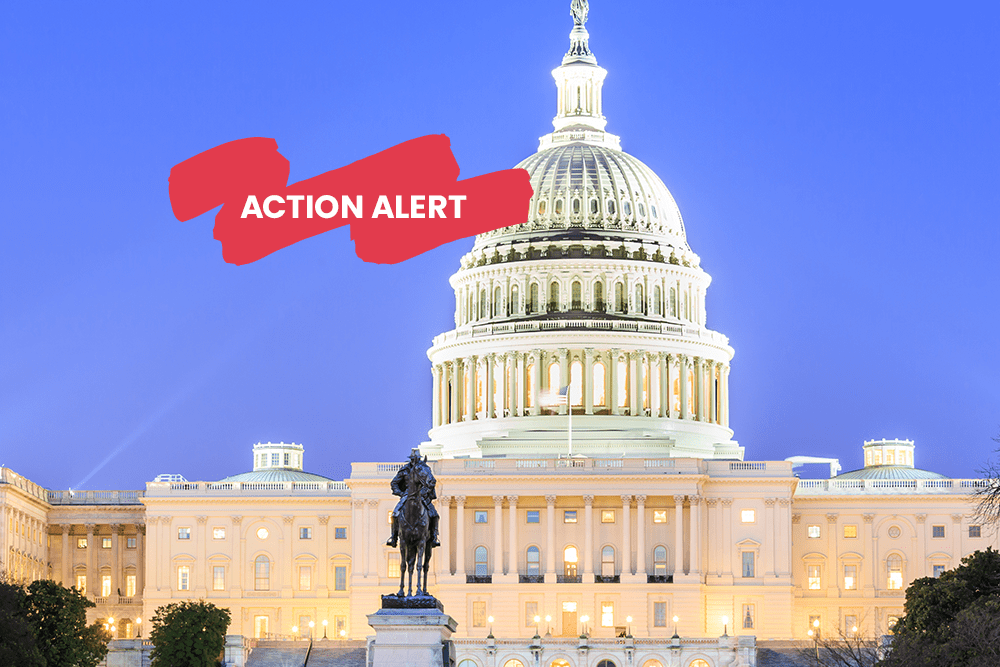Advocacy
Cost of Asthma on Society
Asthma rates remained relatively stable over the past 20 years. But the cost of asthma remains high.
In 2007, the total cost of asthma in the United States was estimated to be $56 billion. In 2013, the cost of asthma grew to almost $82 billion. This represents an increase of 46 percent.
What Does Asthma Cost in the United States?
The total cost of asthma includes both direct costs, like medicines and hospital stays, and indirect costs, like missed work days and productivity. The numbers from 2013 show the significant cost of asthma on our society and those numbers likely increased in the last decade. We need to do something about this issue.

- Researchers think the yearly cost of asthma in the United States is around $82 billion.1
- In 2013, researchers found that the direct cost of asthma is about $3,728 per person each year.1
- Medical costs make up almost $50.3 billion. Prescription medications are the largest part of that cost.1
- Costs due to missed work and school days make up $3 billion. 1
- For people with asthma, asthma is one of the top reasons they miss work or school. Researchers estimate on average, people with asthma miss about 3 more days of work or school each year than people without asthma.2
- People with severe uncontrolled asthma have significantly higher asthma-related costs compared to people with non-severe asthma.3
- Researchers estimate that from 2019-2038, the cost of uncontrolled asthma will be nearly $964 billion.4
How Does Insurance Coverage Impact Asthma Care and Costs?
Health insurance plays a big role in whether someone with asthma can afford their medications and get the care they need. There are different types of insurance, including private insurance (often through jobs) and public insurance (like Medicaid and Medicare).
People without insurance often struggle the most to get asthma care, but even those with public or private insurance can face challenges. When people can’t afford their medicine or see a doctor regularly, they may end up in the emergency room or hospital more often.
- People under 65 with Medicaid or other public insurance are two times more likely to have asthma than people with private insurance.5
- Low-income adults with health insurance are more likely to have better asthma control than those without health insurance. However, cost barriers to accessing health care and medicine can further impact asthma control.6
- Children without health insurance are more likely to have cost barriers seeing a doctor for their asthma and affording asthma medicines compared to children with health insurance.7
- Children with public insurance are more likely to have cost barriers seeing a doctor for their asthma compared to children with private insurance.7
- Children with public insurance are more likely to have asthma-related emergency department visits or hospital stays than children with private insurance.8
- Children with public insurance are less likely to see a specialist for their asthma compared to children with private insurance. Specialist care is recommended for people with poorly controlled asthma.9
What Are the Costs of Asthma Medications?
Over the past decade, the cost of medications increased significantly and remains a barrier to asthma management. In fact, AAFA’s 2017 My Life with Asthma report identified cost as the most common reason people with asthma don’t use their prescribed treatments.
In 2024, 3 major asthma inhaler manufacturers announced $35 per month caps on out-of-pocket costs for people with commercial/private insurance (through your job or federal or state marketplace) or no insurance. However, individuals with public insurance programs like Medicare, Medicaid, CHIP, or TRICARE do not qualify for the price cap. While these price caps are a step in the right direction, they don’t address the cost barriers for everyone. People without access to the discounts or who need asthma medicines not included in the voluntary programs may still struggle with affordability.
- The price of inhaled asthma medicines increased significantly in the past decade because of a 2008 ban on the propellant once used in inhalers.10
- For people with asthma with health insurance, the average out-of-pocket cost of an inhaler rose from $13.60 per prescription in 2004 to $25 in 2008. In 2024, the average retail price of an albuterol inhaler was $98.10
- From 2014-2018, Medicare spend on inhalers increased by 128%.11
- From 2012-2018, Medicaid spend on inhalers increased from $2.1 billion to $4.6 billion. This is an increase of 119%.12
- The use of biologics for asthma treatments is on the rise. However, access to these treatments is more limited for people with public insurance due to high costs.13
- Even though cost-related medication non-adherence to asthma medicine has gone down in the past ten years, about 1 in 6 adults with asthma still skip medicines due to cost.14
Updated January 2025.
Closed
References
- Nurmagambetov, T., Kuwahara, R., & Garbe, P. (2018). The Economic Burden of Asthma in the United States, 2008–2013. Annals of the American Thoracic Society, 15(3), 348–356. https://doi.org/10.1513/annalsats.201703-259oc
- Song, H. J., Blake, K. V., Wilson, D. L., Winterstein, A. G., & Park, H. (2020). Medical Costs and Productivity Loss Due to Mild, Moderate, and Severe Asthma in the United States. Journal of Asthma and Allergy, 13, 545–555. https://doi.org/10.2147/JAA.S272681
- Burnette, A., Wang, Y., Rane, P. B., Chung, Y., Princic, N., Park, J., Llanos, J.-P., Lindsley, A. W., & Ambrose, C. S. (2023). Incremental cost burden among patients with severe uncontrolled asthma in the United States. Journal of Managed Care & Specialty Pharmacy, 29(7), 825–834. https://doi.org/10.18553/jmcp.2023.29.7.825
- Yaghoubi, M., Adibi, A., Safari, A., FitzGerald, J. M., & Sadatsafavi, M. (2019). The Projected Economic and Health Burden of Uncontrolled Asthma in the United States. American Journal of Respiratory and Critical Care Medicine, 200(9), 1102–1112. https://doi.org/10.1164/rccm.201901-0016OC
- National Center for Health Statistics. NHIS Adult Summary Health Statistics. Data accessed January 29, 2025. Available from https://data.cdc.gov/d/25m4-6qqq
- Suri, R., Macinko, J., Inkelas, M., & Needleman, J. (2022). The Relationship Between Insurance Status and the Affordable Care Act on Asthma Outcomes Among Low-Income US Adults. Chest, 161(6), 1465–1474. https://doi.org/10.1016/j.chest.2022.01.011
- Pate, C. A., Qin, X., Bailey, C. M., & Zahran, H. S. (2020). Cost barriers to asthma care by health insurance type among children with asthma. The Journal of asthma : official journal of the Association for the Care of Asthma, 57(10), 1103–1109. https://doi.org/10.1080/02770903.2019.1640730
- Geissler, K. H., Shieh, M.-S., Krishnan, J. A., Lindenauer, P. K., Ash, A. S., & Goff, S. L. (2024). Health Insurance Type and Outpatient Specialist Care Among Children With Asthma. JAMA Network Open, 7(6), e2417319–e2417319. https://doi.org/10.1001/jamanetworkopen.2024.17319
- Goff, S. L., Shieh, M. S., Lindenauer, P. K., Ash, A. S., Krishnan, J. A., & Geissler, K. H. (2024). Differences in Health Care Utilization for Asthma by Children with Medicaid versus Private Insurance. Population health management, 27(2), 105–113. https://doi.org/10.1089/pop.2023.0244
- The Conversation. (2024). Why Asthma Medication Is So Expensive in the U.S.S. News & World Report. https://www.usnews.com/news/healthiest-communities/articles/2024-03-10/why-asthma-medication-is-so-expensive-in-the-u-s
- Thomas, A., Haddad, I., & Hoskere, G. (2021). Trends in Inhaler Prescriptions and Associated Cost in the United States From 2014 to 2018: An Analysis From the Medicare Part D Database. Cureus, 13(2), e13498. https://doi.org/10.7759/cureus.13498
- Sistani, F., Reed, R. M., Shah, C. H., & Zafari, Z. (2021). Trends in Medicaid spending on inhalers in the United States, 2012-2018. Journal of managed care & specialty pharmacy, 27(12), 1744–1749. https://doi.org/10.18553/jmcp.2021.27.12.1744
- Akenroye, A. T., Heyward, J., Keet, C., & Alexander, G. C. (2021). Lower Use of Biologics for the Treatment of Asthma in Publicly Insured Individuals. The journal of allergy and clinical immunology. In practice, 9(11), 3969–3976. https://doi.org/10.1016/j.jaip.2021.01.039
- Graul, E. L., & Janson, C. (2024). Cost-related nonadherence to medication among people with asthma in the United States: findings that reinforce the relevance of history and healthcare reform. Thorax, 80(1), 3–4. https://doi.org/10.1136/thorax-2024-222662

Asthma Capitals
Where you live can have an impact on your asthma. AAFA’s Asthma Capitals™ report looks at the top 100 most challenging cities in the continental United States to live with asthma.












